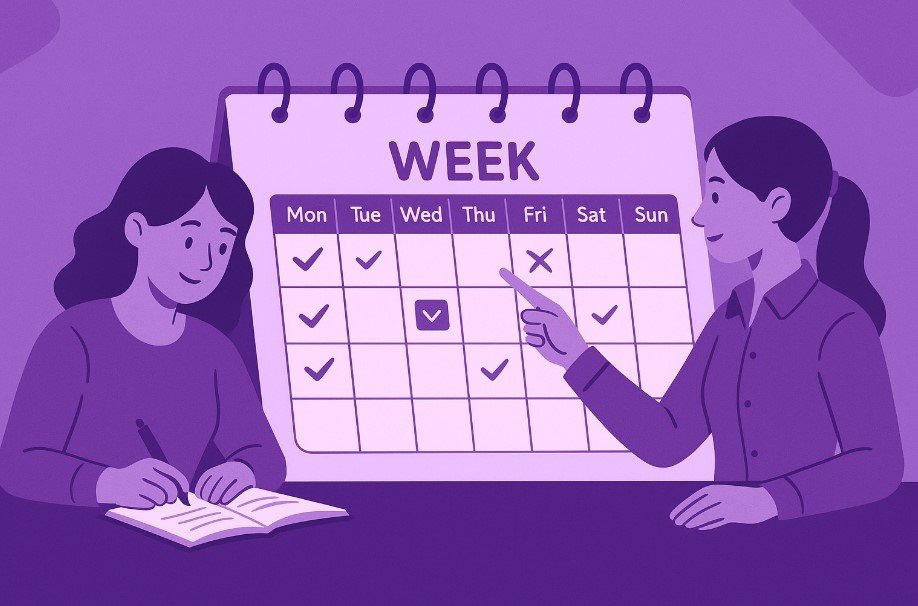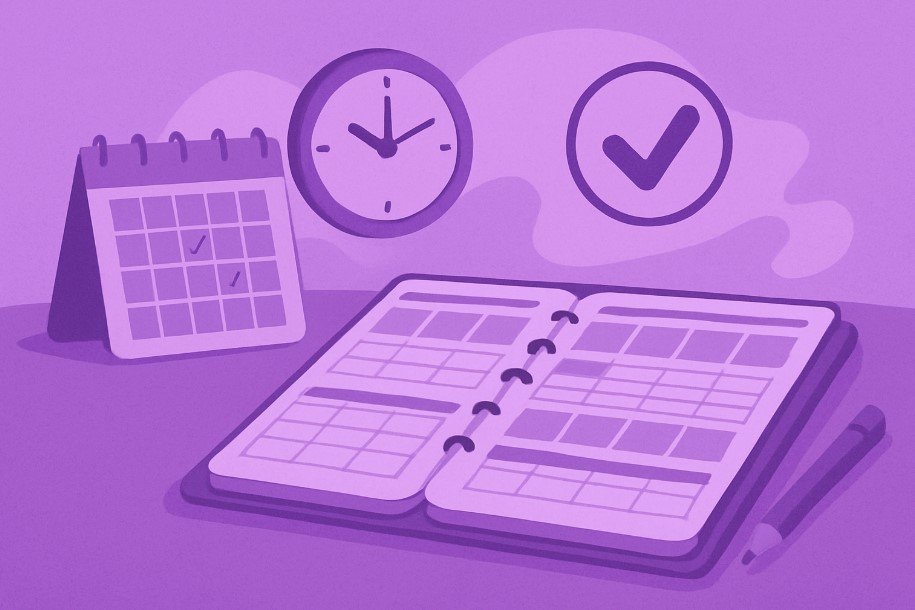5 Shifts
5 Shifts to Master Your Weekly Schedule

Planning your week well helps you stay focused, avoid stress, and get more done. Many people feel busy every day but still feel like they are not making real progress. The problem is often not a lack of time, but a lack of structure. A good weekly schedule gives you control over your time and makes life feel more balanced. You do not need to be perfect or follow a strict plan. You just need to make a few smart changes. These five simple shifts will help you master your weekly schedule in a way that feels clear and easy to follow.
Shift 1: Start With a Weekly Planning Session

The first step to mastering your week is setting aside time to plan it. Choose a time that works best for you. For many people, this is Sunday evening or Monday morning. Spend 15 to 30 minutes reviewing your calendar, upcoming tasks, and priorities. This planning session will help you start the week with a clear idea of what you want to achieve.
During your session, ask yourself:
- What appointments, meetings, or events do I have?
- What are my top priorities this week?
- What deadlines do I need to meet?
- Are there any tasks I’ve been putting off that need attention?
Write everything down. Use a planner, digital calendar, or simple notepad. The goal is to lay everything out so you don’t have to keep it all in your head. Planning once at the start of the week helps you avoid daily decision fatigue and stay on track.
Shift 2: Group Similar Tasks Together

Another useful shift is to group similar tasks. This is called task batching. When you switch between different types of tasks too often, your brain has to reset each time. This wastes time and makes you feel more tired. Grouping tasks helps you stay in the same mode for longer and get more done with less effort.
For example:
- Answer all emails at one or two set times during the day.
- Make all phone calls back-to-back in a 30-minute block.
- Do all your writing or creative work in one focused session.
- Run errands together in one trip instead of spreading them out.
Look at your task list and see which ones you can group. Then block time for those batches in your schedule. This will make your week feel more organized and less rushed.
Shift 3: Time Block Your Priorities

Once you’ve planned your tasks and grouped them, the next step is to allot time for the most important ones. This is where time blocking comes in. Time blocking means setting specific time slots in your calendar for focused work, rest, and personal tasks.
For example:
- Monday 9:00–11:00 AM: Work on project presentation
- Tuesday 2:00–3:00 PM: Research for upcoming article
- Wednesday 10:00–10:30 AM: Weekly report submission
The key is to block time for your top 2–3 priorities first, then fill in the rest. Make sure you also block time for breaks, meals, and relaxing. This helps prevent burnout and supports a balanced life. When you time block your priorities, you create structure and reduce the chance of tasks being delayed or forgotten.
Shift 4: Leave Open Time for Flexibility

A packed schedule with no room for changes can create more stress. Things often don’t go exactly as planned. That’s why it’s important to leave open time blocks for flexibility. These are buffer zones you can use for catching up, dealing with unexpected tasks, or simply taking a break.
Try leaving at least one hour open each day. You can label it as “flex time” in your calendar. This helps you stay calm when something runs late or takes longer than expected. It also gives you time to adjust your plan if new tasks come up.
This flexible space is not wasted time. It helps you stay on schedule without pressure. Having some breathing room makes your plan more realistic and easier to stick to.
Shift 5: Review and Adjust Weekly

At the end of each week, take 10–15 minutes to review what worked and what didn’t. This simple habit helps you get better at planning over time. Ask yourself a few questions:
- What tasks did I complete?
- What didn’t get done, and why?
- Was there anything that took longer than expected?
- Did I have enough time for rest and personal needs?
Use your answers to adjust your approach for the next week. If a certain time block didn’t work well, try a different time. If you felt rushed, maybe you need to cut back on your to-do list. Your weekly review helps you stay in control and learn what suits your life best.
This review can be part of your next weekly planning session. Over time, you’ll develop a routine that makes scheduling easier and more effective.
Extra Tips to Support Your Weekly Plan
Here are a few more tips that can help you master your weekly schedule even faster:
- Keep your to-do list short. Focus on 3 to 5 important tasks per day.
- Use colors in your calendar to see different types of tasks at a glance.
- Set reminders for important tasks or events.
- Avoid multitasking. One task at a time is more efficient.
- Use templates if you do similar tasks every week.
- Try using planning apps like Google Calendar, Trello, or Notion.
Final Thoughts
Mastering your weekly schedule does not require a strict routine or complex system. By making small, smart adjustments, you can create a plan that works for your life and helps you accomplish tasks with less stress. Start with a weekly planning session, batch similar tasks, block time for your priorities, leave space for flexibility, and review your progress each week. These simple habits help you build a more productive and balanced week. You’ll feel more in control, less overwhelmed, and more confident in managing your time.
-

 Social Media2 months ago
Social Media2 months agoWhat the “67” TikTok Meme Really Means
-

 Tech2 months ago
Tech2 months agoWhat To Do When Your Business Faces Network Vulnerabilities
-

 Self Improvement2 months ago
Self Improvement2 months agoUsing BCBS Rehab to Access Quality Addiction Care
-

 Games2 months ago
Games2 months agoPusoy Strategies for Play That Also Work in Pusoy Dos in English






